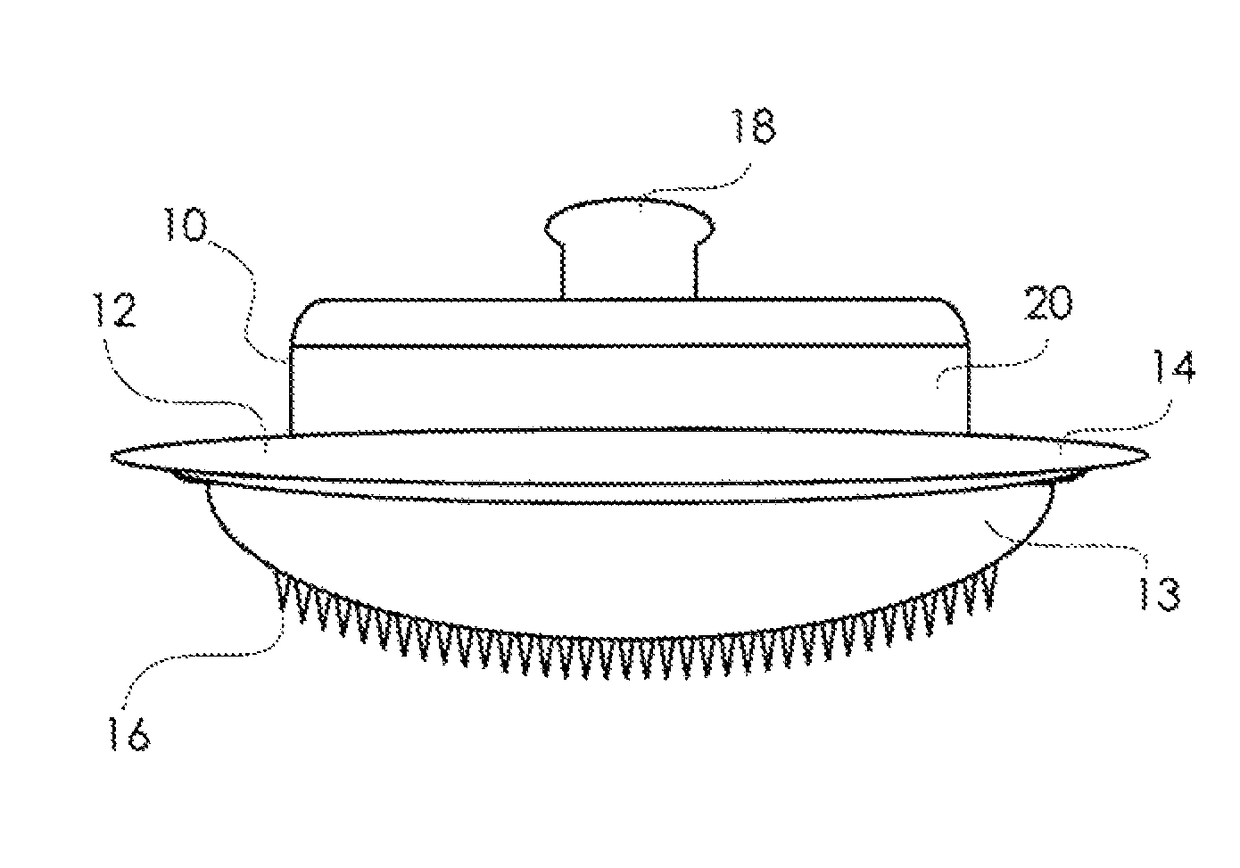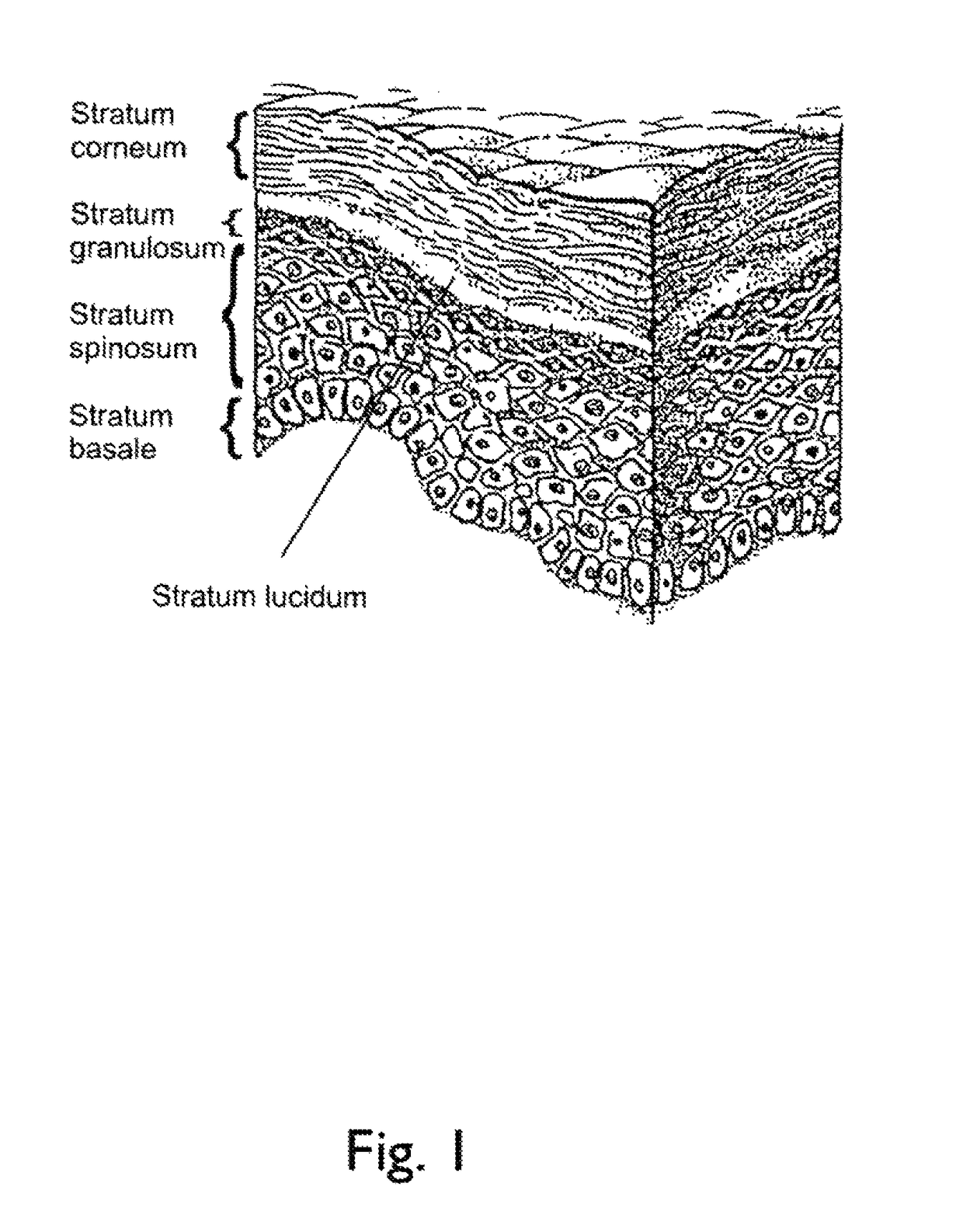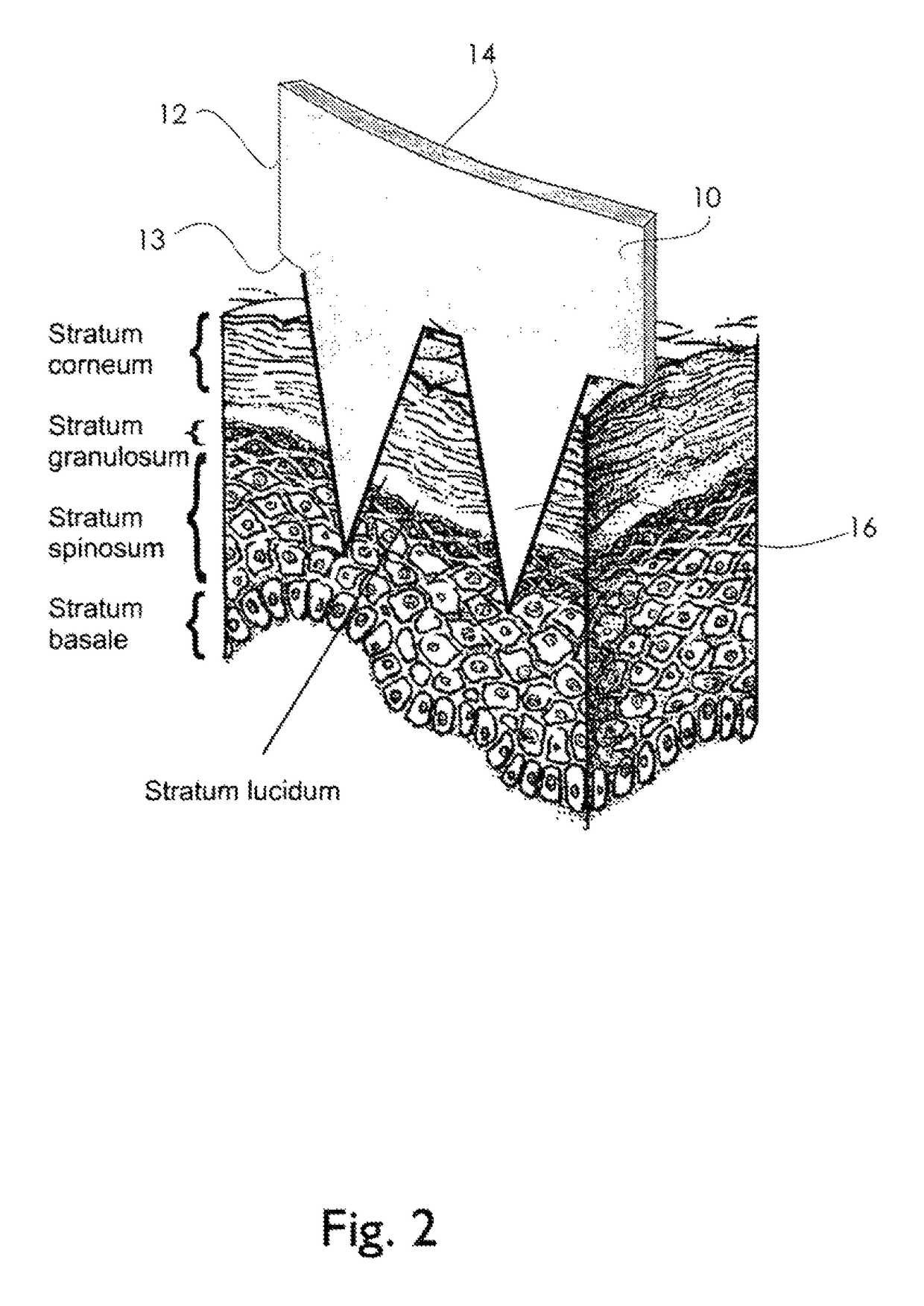Physiological recording device or electrode
a recording device and electrode technology, applied in the field of physiological recording devices, can solve the problems of limited time period for using electrodes, reduced electrode wear resistance, and gradual breakage of joints, and achieve the effects of increasing skin/electrode surface contact, avoiding breakage, and avoiding injury
- Summary
- Abstract
- Description
- Claims
- Application Information
AI Technical Summary
Benefits of technology
Problems solved by technology
Method used
Image
Examples
Embodiment Construction
[0065]The present invention is related to a physiological recording device, and more particularly, a physiological recording electrode that can be used without skin preparation or with or without the use of electrolytic gels. The invention is further directed to the shape of the physiological device of the electrode's lower surface, various connection geometries, as well as a variety of configurations of surface structures on the physiological recording electrode's lower surface. These surface structures have various lengths, widths, and heights, which are preferably durable, rigid and resist breaking, and are capable, at least in part, of transmitting an electric potential from the epidermis of the skin which can be measured. The surface structures may be used to limit the depth of application, to anchor the device or preferably electrode during normal application, to penetrate the skin surface, to displace or move hair and detritus, and / or allow for uniform application of the elec...
PUM
 Login to View More
Login to View More Abstract
Description
Claims
Application Information
 Login to View More
Login to View More - R&D
- Intellectual Property
- Life Sciences
- Materials
- Tech Scout
- Unparalleled Data Quality
- Higher Quality Content
- 60% Fewer Hallucinations
Browse by: Latest US Patents, China's latest patents, Technical Efficacy Thesaurus, Application Domain, Technology Topic, Popular Technical Reports.
© 2025 PatSnap. All rights reserved.Legal|Privacy policy|Modern Slavery Act Transparency Statement|Sitemap|About US| Contact US: help@patsnap.com



